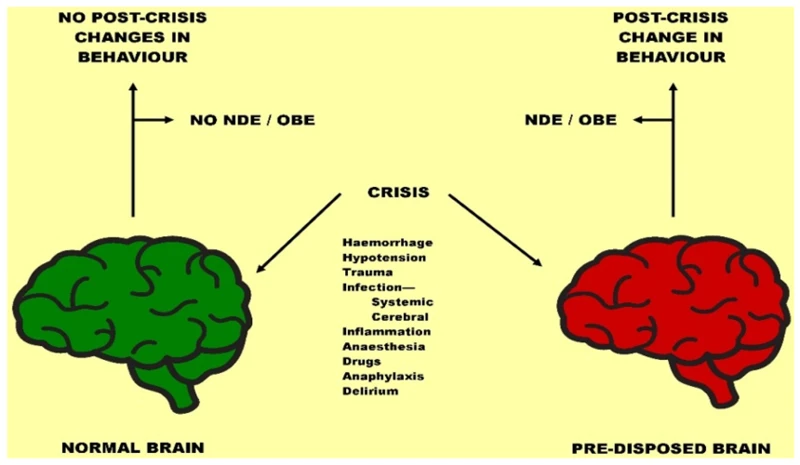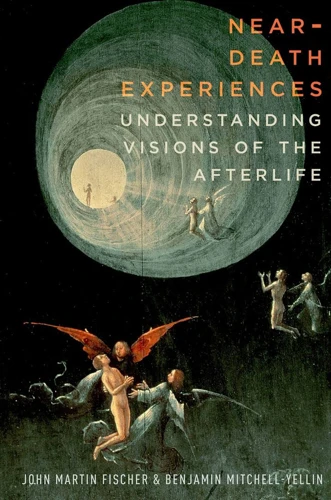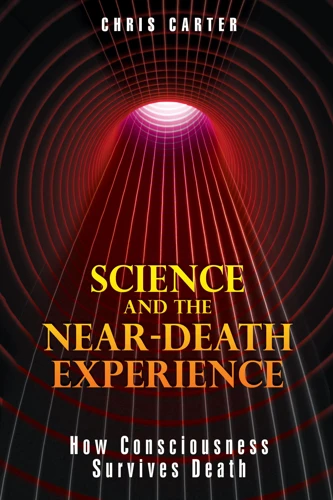As human beings, we are naturally curious about the mysteries of life and death. One of the most fascinating phenomena that has captured the attention of researchers, theologians, and the general public alike is the near-death experience (NDE). People who have gone through NDEs have reported vivid and often life-changing experiences of a realm beyond our physical world, commonly referred to as the Heavenly Realms. Some believe that NDEs and glimpses of the Heavenly Realms provide evidence of an afterlife and a spiritual dimension to our existence. In this article, we will explore the connection between NDEs and the Heavenly Realms, examining the common elements of NDEs, the different types of Heavenly Realms, and the implications of this connection for our spiritual growth and understanding of life and death.
What Are Near-Death Experiences?

Near-death experiences (NDEs) have been a subject of fascination and intrigue for many decades. These experiences occur when a person comes close to death or is declared clinically dead, yet is revived and able to recount vivid and detailed memories of their time in that state. NDEs have been reported across cultures and belief systems, with many similarities in their descriptions. In this section, we will explore more about what NDEs are, the common elements that define them, and the aftereffects that many who experience them report.
The Common Elements of NDEs
During Near-Death Experiences, individuals commonly report experiencing a set of common elements. These elements seem to be universal, cutting across cultural, religious, and geographical boundaries. Here are some of the most frequently reported aspects of NDEs:
- Out-of-body experience: Many NDErs report feeling as though they have left their physical bodies and are observing the world from a different vantage point.
- Intense emotions: NDEs often involve intense feelings of peace, joy, love, and connectedness to others and to the universe as a whole.
- Tunnel experience: Many NDErs report traveling through a tunnel or other enclosed space toward a bright light.
- Encounters with deceased loved ones: In some cases, NDErs report being greeted by deceased friends or relatives during their experience.
- Encounters with a being of light: Many NDErs report encountering a being of light or energy that they interpret as being God or a divine being.
- Life review: NDErs frequently experience a panoramic review of their lives, during which they re-experience events and emotions from their past.
- Reluctance to return: Many NDErs report feeling a reluctance or unwillingness to return to their physical bodies and to the earthly realm.
It is important to note that not all NDEs include all of these elements, and some NDErs report additional or different experiences. However, these common elements do appear frequently in NDE reports from around the world. The presence of such universal elements suggests that NDEs may be tapping into some kind of objective or universal reality beyond our everyday experiences.
The Aftereffects of NDEs
The Aftereffects of NDEs
The aftereffects of NDEs can vary greatly from person to person, but many report experiencing profound, long-lasting changes in their worldview and sense of self. Below, we will explore some of the most commonly reported aftereffects:
| Aftereffect | Description |
|---|---|
| Increased spirituality | Many NDErs report feeling a stronger connection to their spiritual or religious beliefs following their experience, and may become more involved in spiritual practices such as meditation or prayer. |
| Less fear of death | Individuals who have had NDEs often report a decreased fear of death, as they have experienced a sense of peace and comfort during their near-death experience. |
| Enhanced empathy and compassion | Some NDErs report feeling more empathetic and compassionate towards others, and may feel a greater sense of interconnectedness with all people and living beings. |
| Changes in personality | Some NDErs report significant changes in their personality following their experience, often becoming more positive, open-minded, and less materialistic. |
| Integration difficulties | While NDEs can be profound and transformative experiences, many individuals struggle to integrate their experiences into their day-to-day lives. This can lead to feelings of confusion, isolation, and disconnection from others. |
The aftereffects of NDEs suggest that these experiences have significant and long-lasting impacts on the individuals who have them. While these changes can be challenging to integrate, they often offer valuable opportunities for growth and transformation.
To learn more about the different types of heavenly realms and their significance in religious and spiritual traditions, check out our article on Exploring Biblical Heavenly Realms.
What Are the Heavenly Realms?

As Near-Death Experiences (NDEs) continue to captivate and baffle scientists and laypeople alike, the idea of heavenly realms and afterlife has become a subject of great interest. These realms have been described as otherworldly dimensions beyond our physical reality, where spirits or souls go after death. While the concept of heavenly realms is present in many religious and spiritual traditions, the specifics of the experiences vary greatly. In this section, we will explore the meaning and significance of these realms and delve into the different types that have been reported.
The Different Types of Heavenly Realms
When it comes to the heavenly realms, there are various types that are mentioned in different religious and spiritual traditions. These realms are believed to be the abodes of the divine and the departed souls. Let’s explore some of the different types of heavenly realms:
| Heavenly Realm | Description |
|---|---|
| Heaven | The Christian concept of heaven is a place of eternal happiness and peace, where God dwells and where the righteous souls go after death. |
| Nirvana | The Buddhist concept of nirvana is a state of enlightenment and liberation from the cycle of birth and death. |
| Jannah | Jannah is the Islamic concept of paradise, a place of eternal bliss where the faithful are united with their loved ones and rewarded for their good deeds. |
| Avalon | Avalon is the mythical island of Arthurian legends, a place of eternal youth and beauty where the goddesses of the Arthurian pantheon dwell. |
| Elysium | Elysium is the ancient Greek concept of heaven, a place of eternal happiness where the honored dead reside and enjoy a blessed afterlife. |
These are just a few examples of the different types of heavenly realms that are mentioned in various religious and spiritual traditions. Each of these realms has its own unique characteristics and significance, but they all share the common belief that they are places of divine presence and eternal bliss for those who are deemed worthy.
The Spiritual Significance of Heavenly Realms
The `heavenly realms` are often depicted as a place of peace, love, and harmony in many religious and spiritual traditions. The spiritual significance of these realms has been acknowledged by many people over the centuries. Below we have highlighted some of the essential aspects of the `spiritual significance` of `heavenly realms`:
| Aspect | Explanation |
| Connection with the Divine | Many people who have experienced `heavenly realms` during `NDEs` have reported feeling more connected to the divine. They have described an overwhelming sense of oneness with the universe and a feeling of being embraced by a loving presence. This spiritual significance of `heavenly realms` is also central to many religious and spiritual traditions, which teach that we are all part of a divine plan and that there is a higher power that guides and sustains us. |
| Transcendence of Suffering | The `heavenly realms` are often portrayed as a place of peace and freedom from suffering. Many people who have undergone `NDEs` have reported feeling a sense of relief, calmness, and liberation from their earthly suffering. This aspect of `heavenly realms` highlights the spiritual power of transcending the pain and sorrow of this world, and connecting with a higher, more loving reality. |
| Higher Knowledge and Insight | `Heavenly realms` are often depicted as places of higher knowledge and insight. In many `NDE` experiences, people have reported receiving profound insights and understanding about the nature of reality, the meaning of life, and their role in the universe. This spiritual significance of `heavenly realms` emphasizes the importance of spiritual growth and seeking higher knowledge and understanding beyond our earthly existence. |
| Ultimate Destination | Many religious and spiritual traditions claim that `heavenly realms` are the ultimate destination or goal of our existence. These realms are often portrayed as places of eternal life, where we can continue to grow and evolve on a spiritual level. This spiritual significance of `heavenly realms` offers hope and reassurance that our earthly existence is not the end, and that there is a higher purpose to our lives. |
The spiritual significance of `heavenly realms` cannot be understated. They offer hope, peace, and a sense of profound connection with the divine. They also represent the ultimate goal of spiritual evolution and growth, transcending the limitations of our earthly existence. Understanding and experiencing the spiritual significance of `heavenly realms` can be a life-changing and transformative experience.
The Connection Between NDEs and Heavenly Realms

As human beings, we have always been fascinated by the unknown and the afterlife. The idea of a heavenly realm, a place beyond our earthly existence where the soul can transcend to, has been explored in various religious and spiritual traditions. Similarly, near-death experiences (NDEs) have captured our attention as they offer a glimpse into this mysterious realm. While NDEs and the concept of heavenly realms may seem unrelated, there exists a profound connection between the two. In this section, we will explore the link between NDEs and heavenly realms, and the impact this connection has on our understanding of the afterlife and spirituality.
Experiences of NDErs
Near-death experiences (NDEs) have been described as a complex blend of physical, psychological, and transcendental experiences. Those who have had an NDE commonly report a range of experiences that can be categorized into four main components:
| Component | Description |
| Sensory phenomena | NDErs often report intense sensations of light, sound, and color. They may feel as though they are moving through a tunnel or experiencing a sense of weightlessness. |
| Out-of-body experience | NDErs may report feeling as though they are outside of their physical body and observing the scene from above. This sensation is often accompanied by a feeling of peace and detachment from physical pain or discomfort. |
| Encountering other beings | Many NDErs report encountering beings that are not of this physical world, such as deceased loved ones or religious figures. These beings may provide comfort, guidance, or information regarding the NDEr’s life purpose. |
| Life review | NDErs often report a “life review” in which they experience their life from a non-judgmental and compassionate perspective. They may feel a deep sense of connection to others and a desire to make amends for negative actions or behaviors. |
It’s worth noting that NDEs can vary greatly between individuals and may not necessarily include all of these components. However, they generally share a common theme of feeling deeply connected to something greater than themselves and having a heightened awareness of the interconnectedness of all things. These experiences can be life-changing and have been known to inspire spiritual growth and transformation in those who have them.
Heavenly Realms in Religious and Spiritual Traditions
Many religious and spiritual traditions speak of heavenly realms as a place of ultimate reward or higher consciousness. These beliefs often differ in their specifics, but have in common a sense of a divine or transcendent realm beyond our everyday reality.
Christianity: In Christianity, the heavenly realm is often depicted as a place of eternal life with God, angels, and saints. The New Testament describes it as a place of joy, peace, and perfection, often contrasted with the suffering of the earthly realm.
Buddhism: Buddhism teaches that there are multiple levels of heaven, or “Pure Lands”, each associated with a particular Buddha or Bodhisattva. These realms represent stages of spiritual attainment and offer the opportunity for further growth and enlightenment.
Hinduism: Hinduism speaks of multiple heavenly realms, known as “lokas”, each associated with a particular deity. These realms are seen as places of happiness and bliss, but also impermanent and subject to reincarnation.
Islam: In Islam, the highest heavenly realm is Paradise, or “Jannah”, which is promised to those who follow the teachings of the Quran and live a righteous life. It is described as a place of gardens, rivers, and eternal pleasure.
Judaism: Judaism speaks of the heavenly realm as a place of reward and spiritual connection with God, often depicted as being above the earthly world. The Jewish mystical tradition of Kabbalah speaks of multiple levels of heaven, each associated with a different aspect of divinity.
These beliefs in heavenly realms offer a glimpse into a greater, transcendent reality beyond our earthly existence. They inspire a sense of hope and purpose, and provide comfort in the face of life’s challenges and uncertainties.
Scientific Explanations for NDEs and Heavenly Realms

As humans, we have always been fascinated by the mysteries of the afterlife and what happens to us when we die. Near-death experiences (NDEs) and glimpses of the heavenly realms have been reported by people across cultures and time periods. While these experiences have been traditionally attributed to spiritual or religious significance, more recently, scientific and medical research has attempted to explain them through various theories. In this section, we will explore some of these scientific explanations for NDEs and heavenly realms, and the criticisms and implications they bring.
Theories of the NDE
There are several theories that attempt to explain the near-death experience (NDE). Here are a few:
| Theory | Description |
|---|---|
| Biological Theory | This theory posits that NDEs are a result of physiological changes in the brain that occur during times of extreme stress or trauma. The release of endorphins and other chemicals can produce feelings of euphoria or detachment from the body. |
| Psychological Theory | This theory suggests that NDEs are a psychological defense mechanism used by the mind to cope with the fear of death. The mind creates a pleasant and calming experience to alleviate the anxiety associated with dying. |
| Spiritual Theory | This theory proposes that NDEs are genuine experiences of the afterlife or heavenly realms. Proponents of this theory believe that the soul separates from the body during the NDE and experiences the afterlife before returning to the body. |
| Neurochemical Theory | This theory suggests that NDEs are caused by changes in the chemistry of the brain, particularly the release of the neurotransmitter serotonin. Serotonin, which regulates mood and other functions, is believed to be responsible for creating the sensations of peace and bliss reported by NDErs. |
While these theories attempt to explain the mechanisms behind NDEs, none of them provide a complete or universally accepted explanation. It is likely that NDEs are the result of a combination of physiological, psychological, and spiritual factors working together.
Theories of the Afterlife
Theories of the afterlife attempt to explain what happens to a person’s consciousness after their physical body has died. Here are some of the most well-known theories:
- Reincarnation: This theory posits that after death, a person’s soul is reborn into a new body. The specifics of which body a person is reborn into depends on the accumulated karma from their past lives.
- Heaven and Hell: This theory is commonly associated with Christianity and states that after death, a person’s soul goes to either heaven or hell, depending on the person’s beliefs and actions in life.
- Nirvana: This theory is associated with Buddhism and suggests that after death, a person’s consciousness “extinguishes” and attains a state of complete peace and liberation from suffering.
- Nothingness: Some theories purport that when a person dies, there is simply nothingness that follows. There is no consciousness, no soul, and no afterlife.
Each theory of the afterlife has its own set of beliefs and tenets, some of which may overlap with other theories or contradict them entirely. While there is no one “correct” theory, many people find comfort in having some sort of belief or understanding about what comes after death.
Criticisms of Scientific Explanations
While there are many scientific explanations for near-death experiences (NDEs) and glimpses of the heavenly realms, there are also criticisms of these explanations.
One major criticism is that these scientific explanations fail to adequately explain the spiritual and transcendent nature of these experiences. Many people who have had NDEs or glimpses of the heavenly realms report feeling a profound sense of connection to a higher power, and often describe these experiences as life-changing and transformative.
Additionally, some argue that these scientific explanations ignore the subjective and personal nature of these experiences. Each person’s NDE or heavenly realms experience is unique and deeply personal, and it may be difficult to fully capture these subjective experiences using scientific methods.
Another criticism is that these scientific explanations often rely heavily on physical, biological, or neurological explanations, without fully considering the spiritual or metaphysical aspects of these experiences. For example, some scientists have suggested that NDEs may be caused by oxygen deprivation to the brain, without fully considering the possibility that these experiences may be rooted in a spiritual or transcendent reality beyond the physical realm.
Some critics argue that the scientific explanations fail to account for the wide variety of NDE and heavenly realms experiences reported across different cultures and belief systems. These experiences may have different meanings and interpretations depending on a person’s religious or cultural background, and it may be difficult to fully understand the spiritual significance of these experiences without taking this into account.
While there are many scientific explanations for NDEs and glimpses of the heavenly realms, there are also valid criticisms of these explanations. It is important to consider the spiritual, subjective, and cultural aspects of these experiences in order to fully understand their significance and meaning.
| Major Criticisms of Scientific Explanations for NDEs and Heavenly Realms |
| 1. Failure to explain the spiritual and transcendent nature of these experiences. |
| 2. Ignoring the subjective and personal nature of NDEs and heavenly realms experiences. |
| 3. Over-reliance on physical, biological, or neurological explanations, without fully considering the spiritual or metaphysical aspects of these experiences. |
| 4. Inability to account for the wide variety of NDE and heavenly realms experiences across different cultures and belief systems. |
Implications of the Connection
As we explore the connection between near-death experiences and glimpses of the heavenly realms, it is fascinating to consider the implications of this connection. The experiences of those who have undergone an NDE and the spiritual significance of heavenly realms can have a profound impact on individuals and society as a whole. In this section, we will delve into the potential implications of this connection, including the opportunities for spiritual growth and transformation, reassurance and hope, and the integration of NDE and heavenly realms experiences.
Spiritual Growth and Transformation
One of the most significant implications of the connection between near-death experiences (NDEs) and glimpses of heavenly realms is the potential for spiritual growth and transformation. NDEs often involve encounters with transcendent beings and experiences of profound love, peace and unity. These transformative experiences can lead to a shift in one’s values, beliefs, and priorities, and can help individuals find meaning and purpose in their lives.
Here are some ways in which the connection between NDEs and heavenly realms can lead to spiritual growth and transformation:
- Breaking down barriers: NDEs tend to dissolve the boundaries between people, cultures, and religions. Many NDErs report feeling a sense of unity with all living beings and a heightened awareness of the interconnectedness of all things. This can lead to a more inclusive and compassionate worldview, promoting understanding and respect for diverse viewpoints and traditions.
- Healing trauma: For some NDErs, the experience can be a source of healing and closure. The encounter with a transcendent being, the feeling of being unconditionally loved or forgiven, and the sense of purpose and meaning in life can help individuals overcome past trauma, guilt, and anxiety.
- Living with purpose: NDEs can also provide a sense of purpose or mission in life. Many NDErs report feeling a strong desire to serve others, to live a more altruistic life, or to pursue a certain path or profession that aligns with their values and passions.
- Reducing fear of death: Fear of death is one of the most common fears in human beings. NDEs can help individuals overcome this fear by providing a glimpse of what might lie beyond the physical realm. Knowing that there is something beyond death can reduce anxiety and help individuals live life more fully and fearlessly.
- Enhancing spirituality: NDEs can also deepen one’s spiritual beliefs and practices. The encounter with a divine being or a heavenly realm can reaffirm or transform one’s beliefs about God, the afterlife, and the nature of reality. This can lead to a renewed commitment to spiritual practices such as prayer, meditation, or religious observance.
The connection between NDEs and glimpses of heavenly realms can offer a transformative experience that leads to spiritual growth, increased compassion and understanding, healing from trauma, purposeful living, reduced fear of death, and deepened spirituality.
Reassurance and Hope
One of the most significant implications of the connection between near-death experiences (NDEs) and glimpses of the heavenly realms is the reassurance and hope it can provide.
For those who have suffered a loss or are facing their own mortality, the idea that death may not be the end and that there could be a beautiful afterlife waiting for us can bring a sense of peace and comfort. As one NDEr put it, “I know now that death isn’t something to fear, it’s just a change of form.”
The stories of those who have had NDEs and experienced glimpses of the heavenly realms can also provide hope and inspiration for those going through difficult times. The idea that there is a higher power or a spiritual plan can be a source of strength and encouragement.
This reassurance and hope is particularly significant for those who have lost loved ones. Knowing that their loved one may have experienced a beautiful afterlife can bring comfort in the midst of grief and help with the healing process.
The connection between NDEs and glimpses of the heavenly realms can provide a sense of purpose and meaning. If there is a spiritual realm and a higher power at work, then our lives have a purpose beyond just our physical existence.
The connection between NDEs and glimpses of the heavenly realms can bring a sense of peace, hope, and purpose to those going through difficult times. It can provide a reassurance that death is not the end and that there is a higher power at work.
Integration of NDE and Heavenly Realms Experiences
One of the most important aspects of near-death experiences (NDEs) and glimpses of the heavenly realms is the integration of these experiences into the individual’s life. It can be challenging to integrate these experiences into one’s identity and worldview, particularly when they are so different from everyday reality.
Integration Strategies
Some strategies for integrating NDE and heavenly realms experiences into one’s life include:
- Sharing the experience with supportive individuals who are open to hearing about it.
- Journaling or writing about the experience in order to process the emotions and insights that arise.
- Seeking out others who have had similar experiences, either through support groups or online communities.
- Engaging in spiritual practices or rituals that align with one’s newfound understanding of the afterlife and the divine.
- Living in a way that embodies the lessons learned from the experience, such as living with greater compassion or fearlessness.
Challenges of Integration
Despite the potential benefits of integrating NDE and heavenly realms experiences into one’s life, there can also be challenges. Some individuals may feel isolated or stigmatized by sharing their experience with others who do not understand or accept it. Others may struggle to reconcile their experience with their existing religious or spiritual beliefs, leading to feelings of confusion or cognitive dissonance.
Overall Benefits
However, for those who are able to successfully integrate these experiences into their lives, there can be significant benefits. These include:
- An increased sense of purpose and meaning in life, as well as a greater understanding of the interconnectedness of all things.
- A sense of inner peace and transcendence of fear of death, leading to a greater quality of life and lower levels of anxiety.
- Increased empathy and compassion towards others, as well as a decreased focus on material possessions or superficial concerns.
- Greater spiritual maturity and a deeper sense of connection to the divine or universal consciousness.
The integration of NDE and heavenly realms experiences can be a transformative and life-affirming process, offering individuals a new perspective on life and death, a greater sense of purpose, and a deeper connection to the divine.
Conclusion
After exploring the connection between near-death experiences (NDEs) and glimpses of heavenly realms, it becomes clear that there is a profound relationship between the two. NDEs reveal a common set of elements such as a sense of peace, a tunnel, an out-of-body experience, and encounters with deceased loved ones or spiritual beings. These experiences occur during a time when the brain is either severely impaired or inactive, suggesting that consciousness may exist beyond the physical body.
Heavenly realms are often described as ethereal, otherworldly places where souls may reside after death. They are thought to be places of love, harmony, and enlightenment, and are often associated with religious and spiritual traditions. While the nature of these realms may be debated, their spiritual significance cannot be denied.
The connection between NDEs and heavenly realms is apparent in the experiences of NDErs. Many NDErs report encountering heavenly beings or having a profound sense of connection with the divine during their experiences. Additionally, the descriptions of heavenly realms in religious and spiritual texts share similar elements to those reported by NDErs.
While some scientific theories attempt to explain NDEs and heavenly realms as hallucinations or the result of brain chemistry, these explanations are often criticized for their inability to fully account for the range of experiences reported by NDErs.
The implications of the connection between NDEs and heavenly realms are numerous. These experiences can lead to spiritual growth and transformation, as well as a sense of reassurance and hope for those who are grieving. Additionally, integrating NDE and heavenly realms experiences can lead to a greater understanding of the nature of consciousness and the afterlife.
In conclusion, the connection between NDEs and heavenly realms is a fascinating and complex topic that has important implications for our understanding of consciousness, spirituality, and the afterlife. While there is no consensus on the nature of these experiences, their profound impact on individuals cannot be denied.
Frequently Asked Questions
What percentage of people have reported experiencing a near-death experience?
Estimates vary, but it is believed that between 4% and 15% of people have reported experiencing a near-death experience.
What are the most common elements of a near-death experience?
The most common elements reported by those who have had a near-death experience include a feeling of peace or euphoria, a sense of leaving the body, meeting deceased loved ones, and traveling through a tunnel towards a bright light.
Can a person have a near-death experience without actually being close to death?
Yes, some people have reported having a near-death experience during times of extreme emotional or physical stress, such as a heart attack, car accident, or even childbirth.
What are some of the aftereffects of a near-death experience?
After a near-death experience, some people report a heightened sense of intuition, a greater appreciation for life, and a decreased fear of death. Others may have difficulty adjusting to daily life or experience changes in their relationships or religious beliefs.
What are some of the different types of heavenly realms that people have reported experiencing?
Heavenly realms reported by those who have had a near-death experience include paradise-like gardens, golden cities, and expansive landscapes filled with celestial and divine beings.
Why do so many religious and spiritual traditions incorporate ideas of heavenly realms?
Many religious and spiritual traditions believe in an afterlife and the existence of heavenly realms as a place of reward for those who have lived a good life or have achieved spiritual enlightenment.
What are some of the scientific explanations for near-death experiences?
There are several theories including a lack of oxygen to the brain, heightened activity in the limbic system, and neurotransmitter imbalances. However, none of these theories can fully explain all aspects of the near-death experience.
Why do some people criticize scientific explanations of near-death experiences?
Some people believe that reducing the near-death experience to a purely scientific explanation diminishes its spiritual significance and disregard the possibility of an afterlife or heavenly realms.
What are some of the spiritual implications of the connection between near-death experiences and heavenly realms?
Some people report spiritual growth and transformation following a near-death experience and an increased desire to live a purposeful life. Others find reassurance and hope in the idea of an afterlife and the existence of heavenly realms.
Is it possible for people to integrate their near-death experience and their understanding of the heavenly realms into their daily life?
Yes, many people report finding meaning and purpose in their lives by incorporating the lessons they learned during their near-death experience and incorporating their understanding of the heavenly realms into their spirituality and relationship with the divine.








